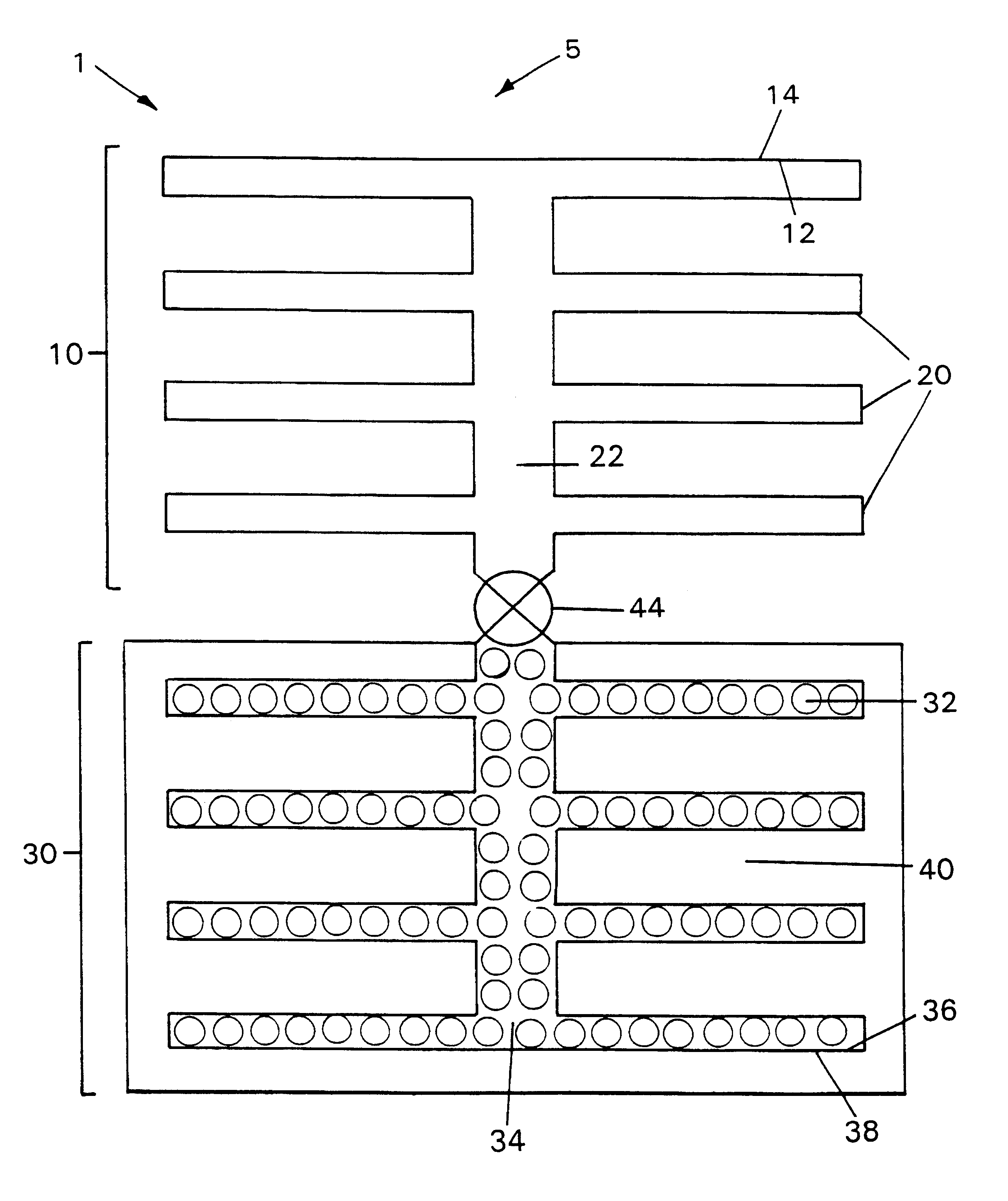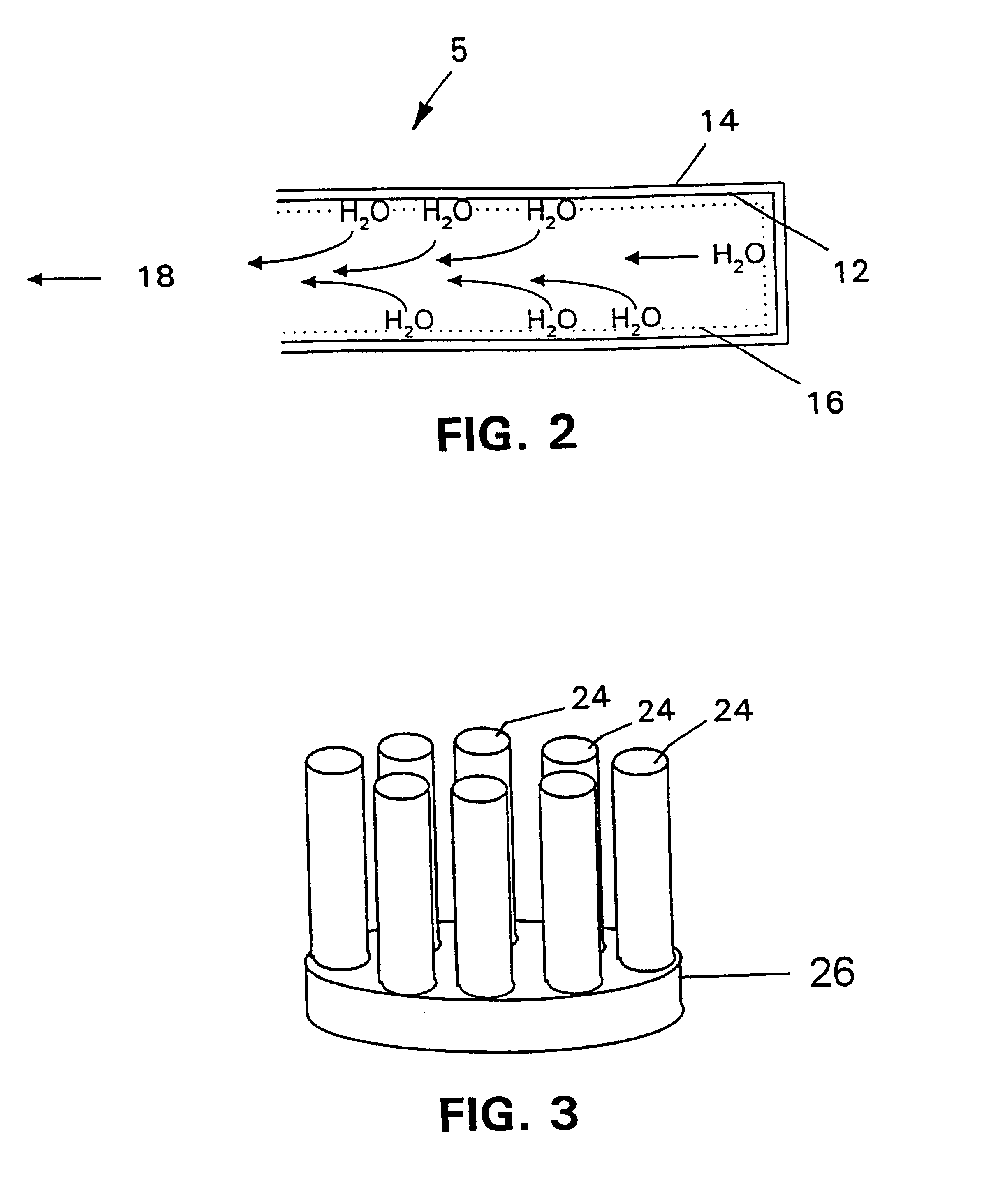Preparation of heat sink materials
a heat sink and material technology, applied in the direction of domestic cooling apparatus, container discharge methods, lighting and heating apparatus, etc., can solve the problems of not being able to quickly cool food or beverage, not always practical use of these units for cooling such foods and beverages, and insulated containers are much more bulky and heavy than food or beverages, etc., to achieve high efficiency
- Summary
- Abstract
- Description
- Claims
- Application Information
AI Technical Summary
Benefits of technology
Problems solved by technology
Method used
Image
Examples
Embodiment Construction
The self-refrigerating device used in the present invention includes three basic sections: an evaporator chamber containing a refrigerant, an evacuated sorbent chamber containing a sorbent and a heat sink material, and a means to prevent the flow of refrigerant vapor between the evaporator chamber and the sorbent chamber. This flow-preventing means is also adapted to allow the flow of refrigerant vapor between the evaporator and sorbent chambers, such as when the device is in operation. The functional relationships between these sections in a particular refrigeration device have been roughly described in U.S. Pat. Nos. 5,197,302 and 5,048,301. The inventive devices are generally utilized in conjunction with a product to be cooled. These products and associated uses will be detailed after discussion of the device itself, which follows directly below.
Regarding FIG. 1, a particular embodiment of refrigeration device I according to the general principles of the invention is displayed. T...
PUM
| Property | Measurement | Unit |
|---|---|---|
| temperature | aaaaa | aaaaa |
| temperature | aaaaa | aaaaa |
| thick | aaaaa | aaaaa |
Abstract
Description
Claims
Application Information
 Login to View More
Login to View More - R&D
- Intellectual Property
- Life Sciences
- Materials
- Tech Scout
- Unparalleled Data Quality
- Higher Quality Content
- 60% Fewer Hallucinations
Browse by: Latest US Patents, China's latest patents, Technical Efficacy Thesaurus, Application Domain, Technology Topic, Popular Technical Reports.
© 2025 PatSnap. All rights reserved.Legal|Privacy policy|Modern Slavery Act Transparency Statement|Sitemap|About US| Contact US: help@patsnap.com



